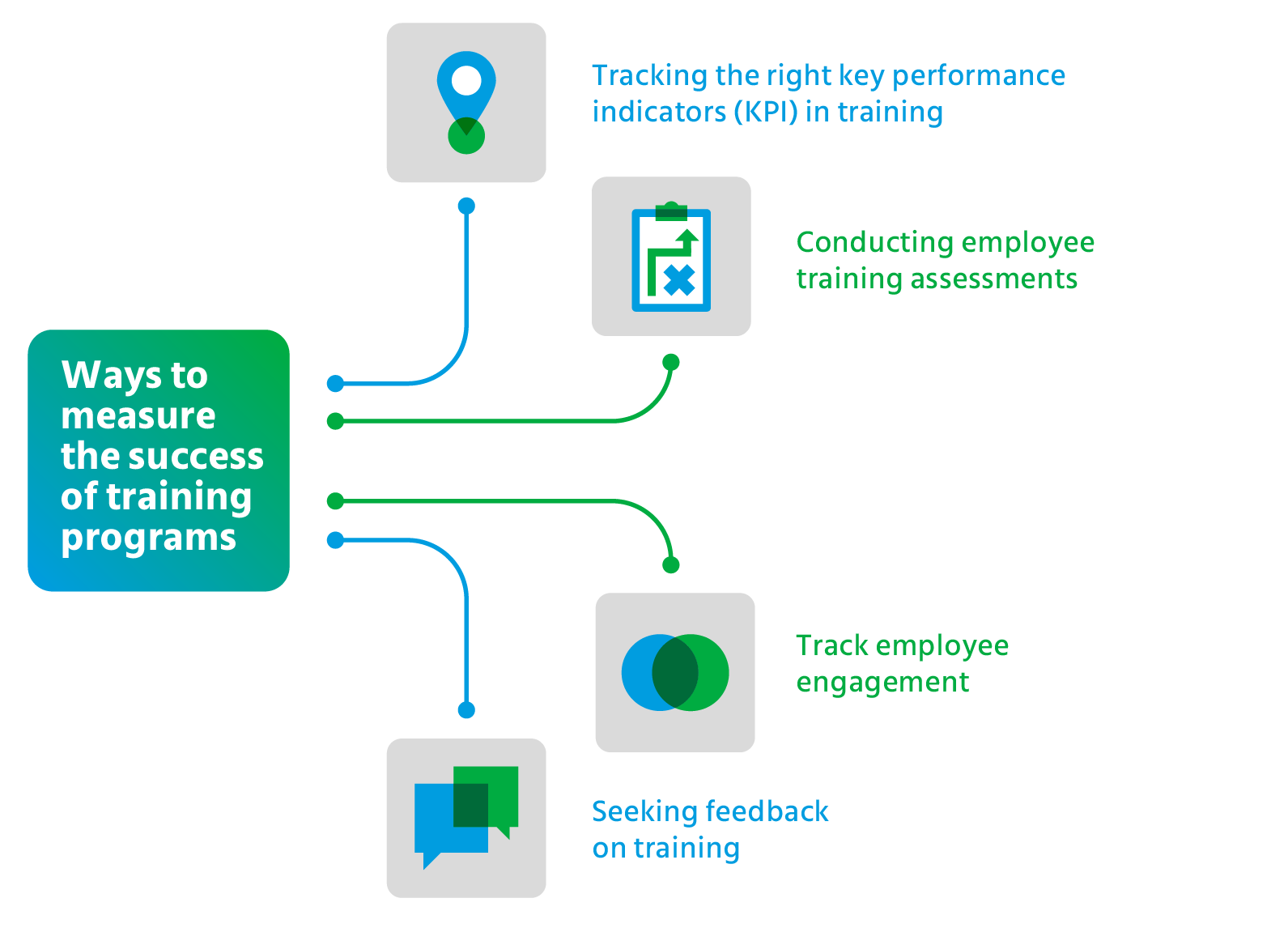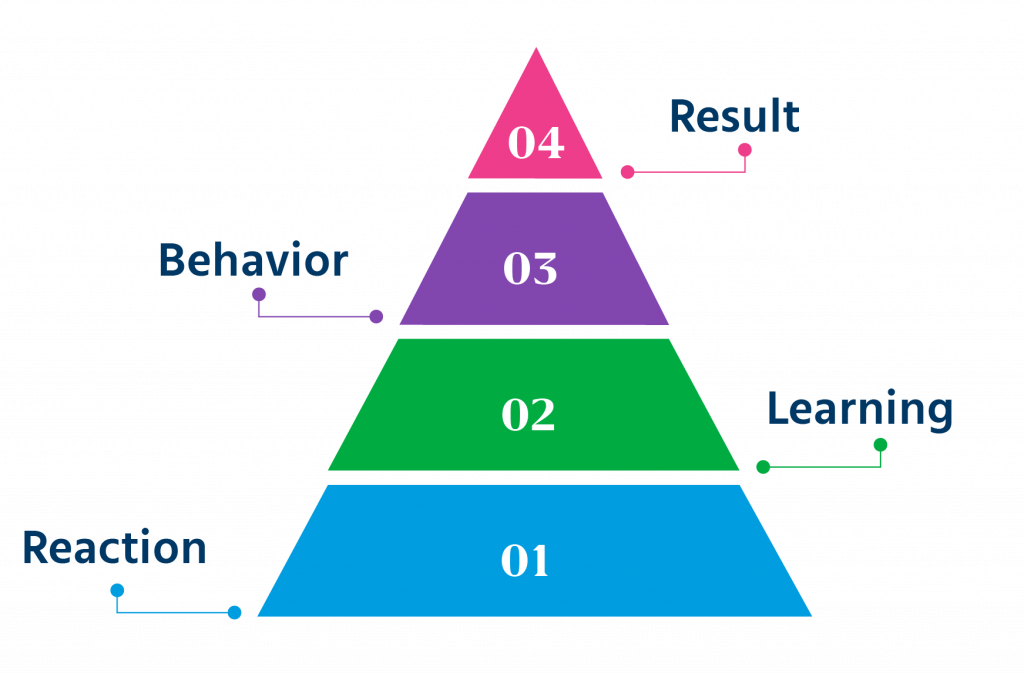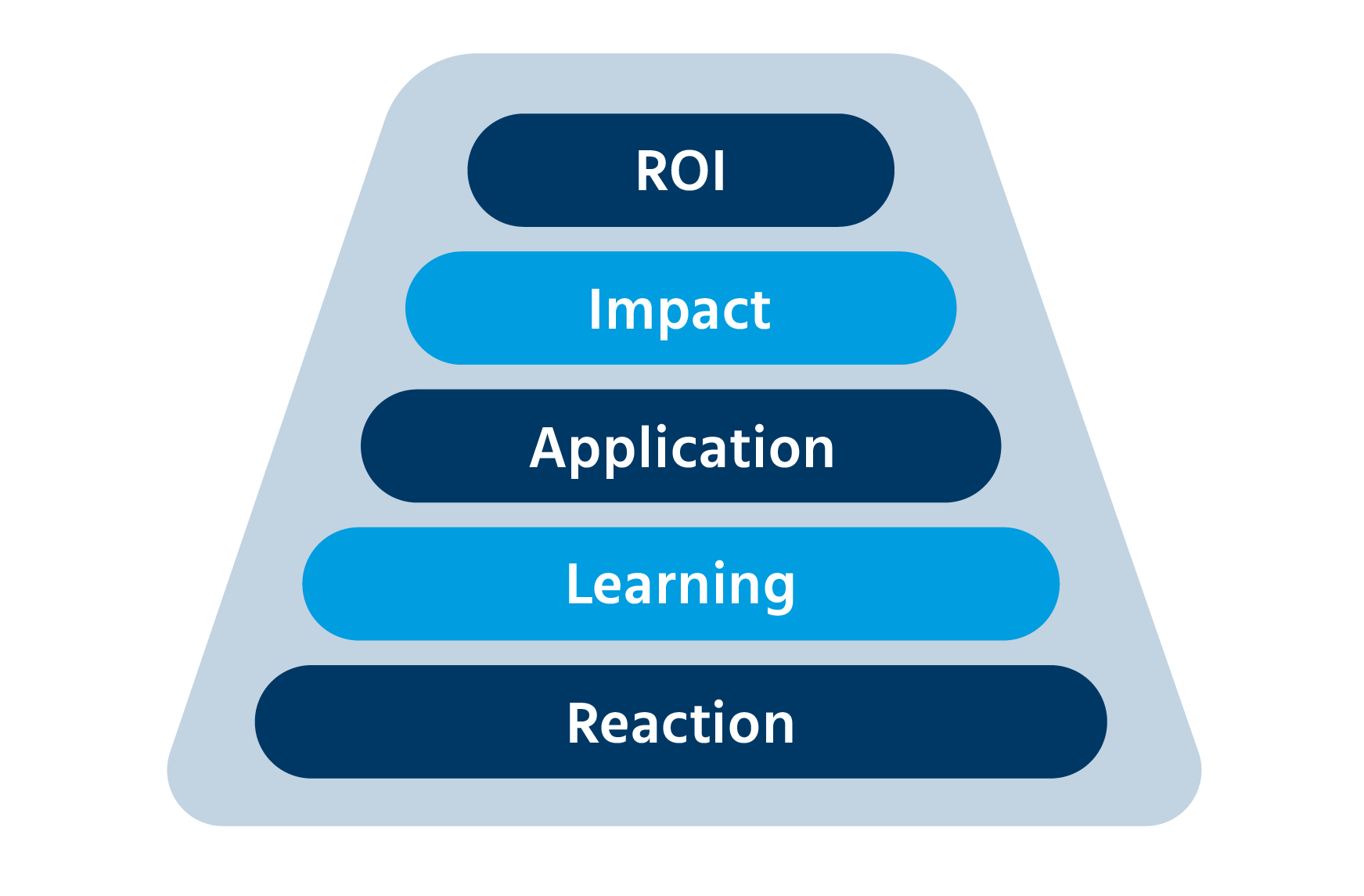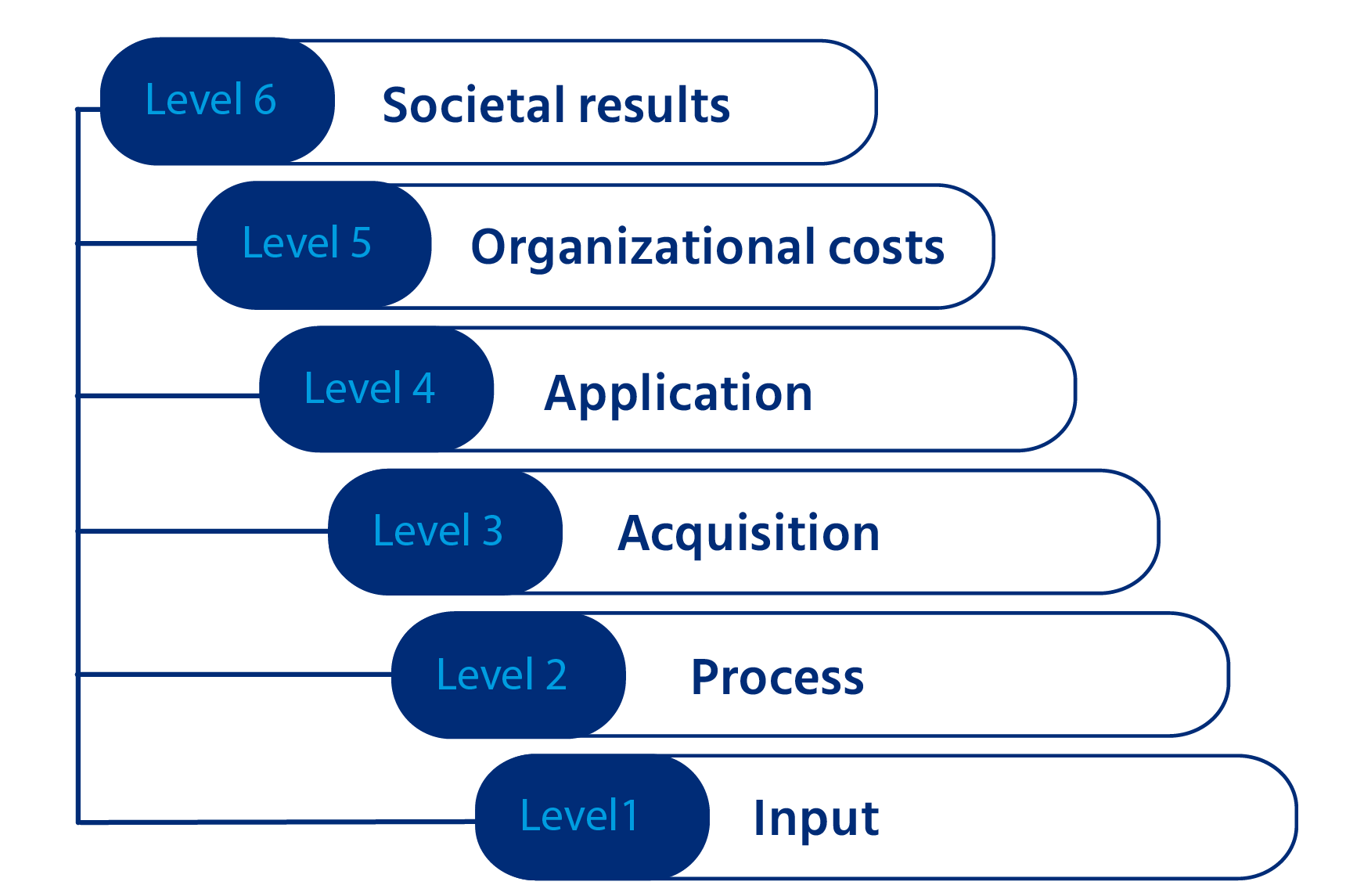Mercer | Mettl’s Training Effectiveness tool helps understand the training lifecycle, including training needs identification, measurement of the program ROI, and impact on employees’ knowledge and skills.
Pre-training assessments
Mercer | Mettl’s pre-training assessments are customized for the specific competency training framework. These assessments, when administered before the training, measure the current proficiency level in the desired competencies. They help in creating the right training program for employees.
Post-training assessments
Mercer | Mettl’s post-training assessment framework is designed based on the Kirkpatrick 4-level training evaluation model, the worldwide standard for evaluating training effectiveness. It helps assess the effectiveness of the L&D program for successfully filling skill gaps in each employee to improve their performance.
Based on the Kirkpatrick Model, Mercer | Mettl’s training effectiveness assessment solutions measure perceived learning and demonstrated understanding. They take into account the following:
- Reaction: Candidates’ idea of whether the training program has helped them or not
- Learning: How much has the candidate assimilated?
- Behavior: How much did the candidate retain after the training ended?
- Result: Captures the observable difference in candidates’ behaviors and attitudes before and after the program









 Behavioral Competencies
Behavioral Competencies Cognitive Competencies
Cognitive Competencies Coding Competencies
Coding Competencies Domain Competencies
Domain Competencies






























